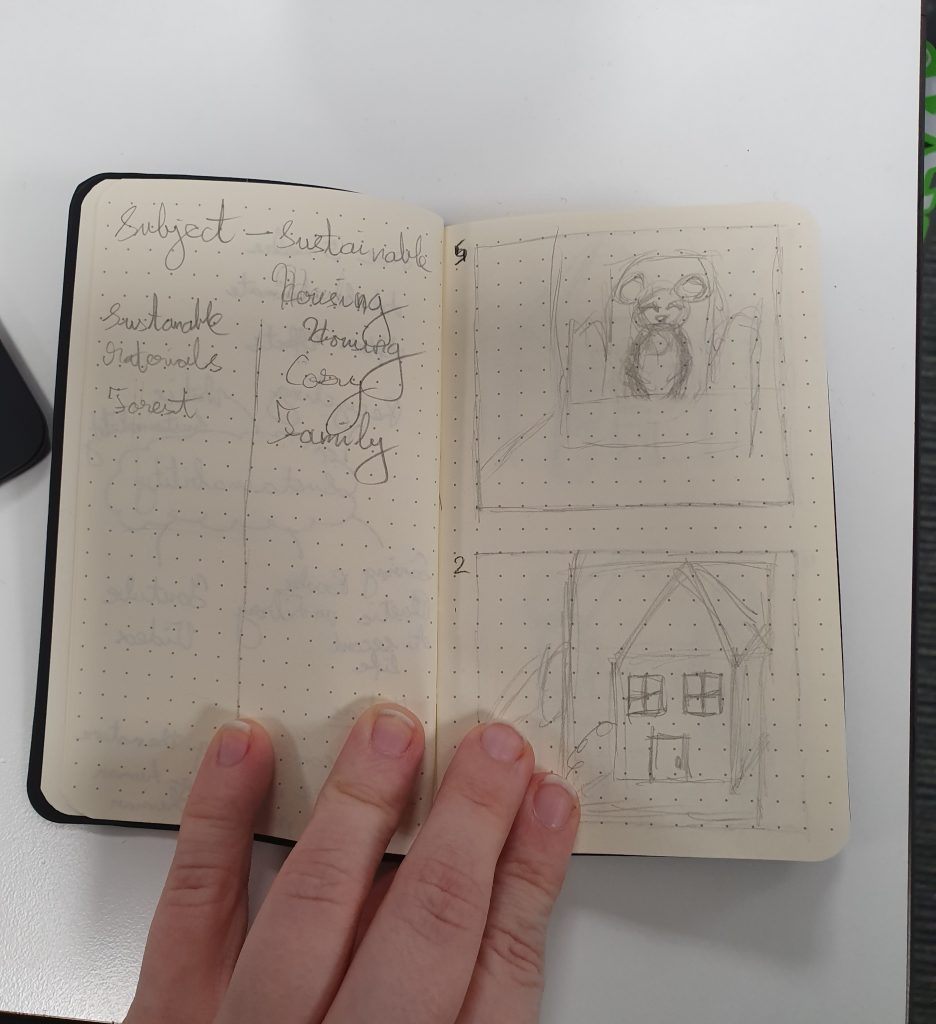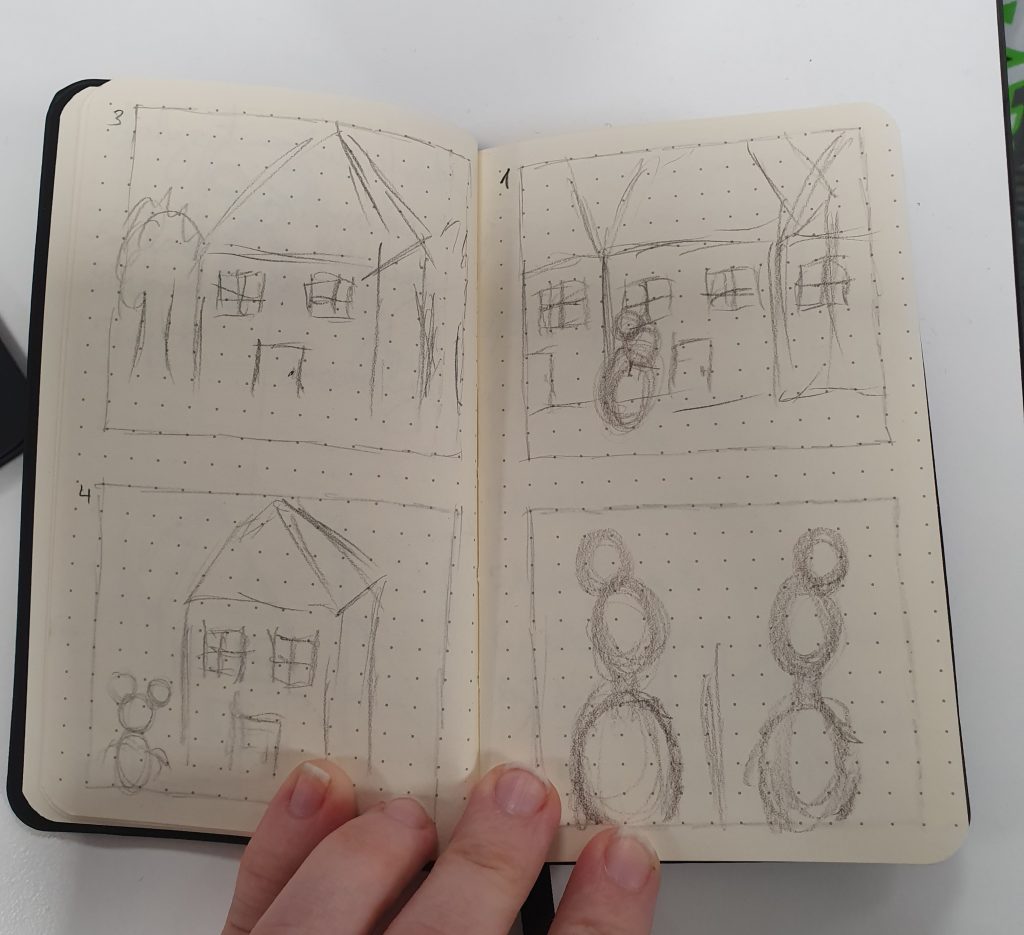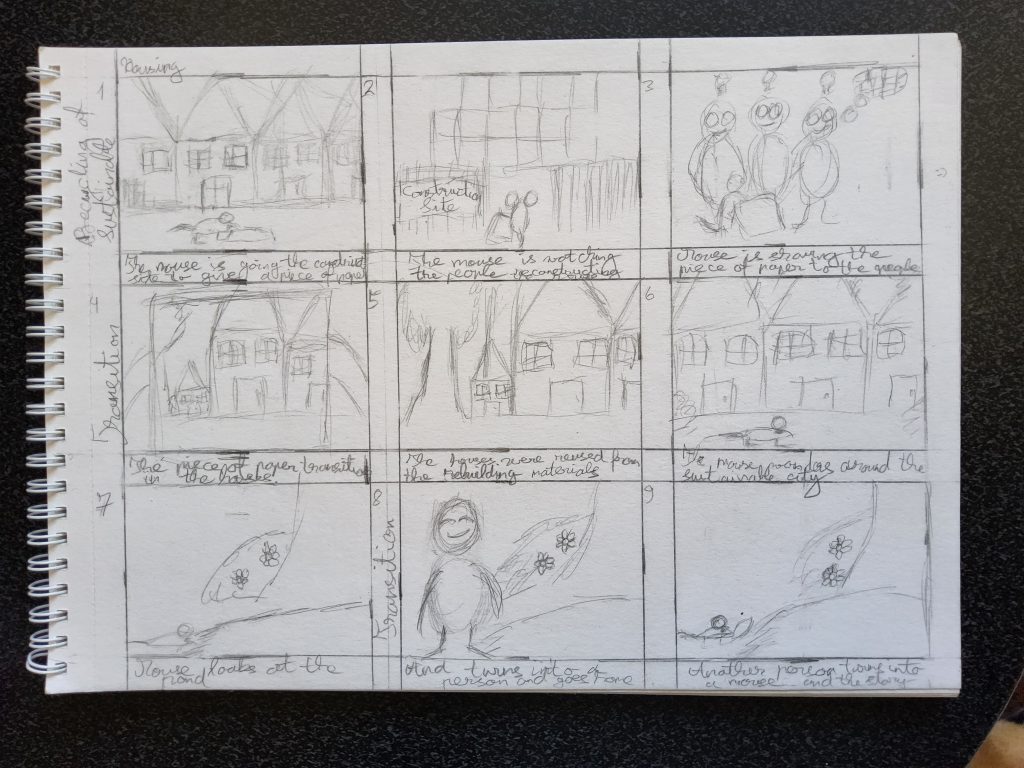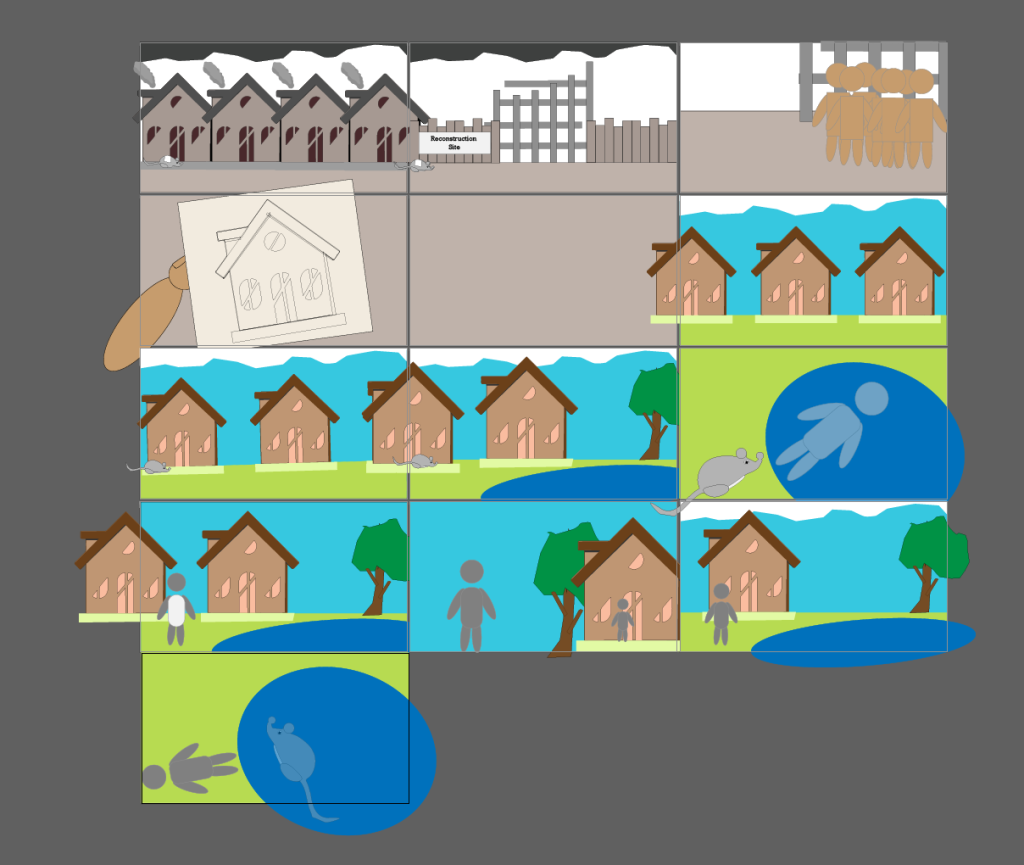After the process of brainstorming, I have come up with a variety of sustainable housing-related ideas in order to create animation. My first thought was to create a mouse-like animated character who would cross a unhealthy village and notice the advertisement. This advertisement changes to a sustainable town with recycled objects and a natural setting. As soon as the mouse enters a new area, it starts interacting with its neighbours. I abandoned the idea after quickly creating a storyboard because it was difficult and the transitions between the frames weren’t as seamless.



After conducting extra study, I discovered a European sustainable method known as Circular Economy, which entails reusing construction materials and adding more environmentally friendly components to reduce the number of diseases afflicting individuals living in standard dwellings. As a result, I chose to include this aspect in the animation. As a result, I created a new concept that connects two notions, such as Sustainable Housing and Circular Economy. This design storyboard begins with a mouse running through a village with ordinary houses. Mouse is sprinting to the reconstruction site, which instead of constructing buildings, rebalances them and recycles the materials. As the mouse enters the site, it displays the piece of paper from its back.

Using nature and ecological elements, this sheet of paper turns into the sustainable village. The mouse then runs to the pond across the new village. When the mouse stares into the water, it reflects the inner person that it has become. The person will then open the door to her new home. While the individual was walking home, another individual passed by and looked at the pond. The mouse is reflected in the pond. As a result, the person transforms into the mouse, and a falling leaf from the tree transforms into that piece of paper. As a result, the circle that connects Sustainable Housing and Circular Economy continues.

References
News European Parliament, 02 December 2015. Circular economy: definition, importance and benefits [Online] (Updated in 22 February 2023) Available at : https://www.europarl.europa.eu/news/en/headlines/economy/20151201STO05603/circular-economy-definition-importance-and-benefits [Accessed in 28 February 2023]
